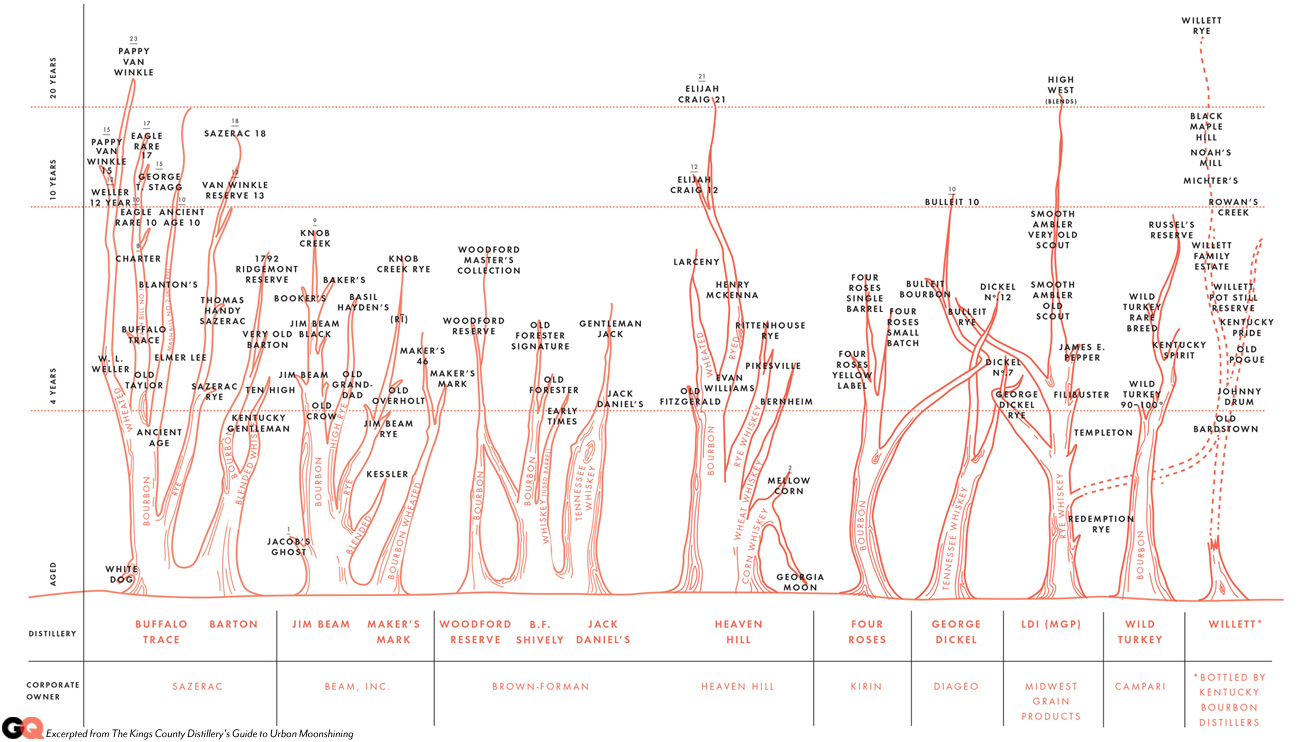The Family Tree of Bourbon Brands
This chart shows the major distilleries operating in Kentucky, Tennessee, and Indiana, grouped horizontally by corporate owner, then subdivided by distillery.
Get ready to pay more for your bourbon whiskey. Or do without it.
Because of the recent spike in popularity of this quintessentially American brown spirit, distillers, who generally need to age even the cheapest stuff for 8-10 years, are warning that a major shortage is coming. (For whiskey to legally meet the definition of “straight bourbon,” it must be aged a minimum of two years in new charred oak barrels, and many of the high-end, small-batch bourbons so popular with the hipster crowd are aged significantly longer.)
This isn’t a total surprise. Buffalo Trace Distillery warned last year that demand was outpacing supply and temporary product shortages were on the horizon.
Well, the shortage is now here, and this chart helps explain why.
This chart shows the major distilleries operating in Kentucky, Tennessee, and Indiana, grouped horizontally by corporate owner, then subdivided by distillery. Each tree shows the type of whiskey made, and the various expressions of each style of whiskey or mash bill, in the case of bourbons. For instance, Basil Hayden’s is a longer-aged version of Old Grand-Dad, and both are made at the Jim Beam Distillery using the same mash bill. The difference comes from where in the warehouse the barrel is aged and how long it is kept in the barrel.
But as you can see, there are a lot of different bourbon brands that begin with the same set of barrels. And given the fact that production has surged by more than 150 percent in the past 15 years in Kentucky – home to 95 percent of the world’s bourbon production – there is only so much brown liquor to go around. At least for another 8-10 years.


